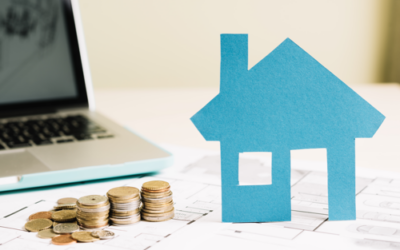TLDR
A temporary oversupply, coupled with new-construction incentives, and historically low interest rates, will serve to push this market up quickly. Short term (<3-6mo), I would expect to see some GREAT deals. Once we enter 2021, I fully expect to see rapid price inflation, compounded by economic inflation due to the influx of stimulus currency. If you’re a cash buyer, get locked and loaded NOW. If you’re using financing and are not already pre-approved with a lender, I would start that process ASAP. Lenders are still backed up with all the recent refinances, and due to the uncertainty surrounding loan forbearance, approvals are only going to get harder before they get easier.
The full story…
I’ve had a lot of questions recently about the market, how it’s fared during COVID, and when we should expect a rebound. Local REALTORS® and brokerages like to play up statistics to land you as a customer, as you’ve probably seen plenty of the “housing prices are up, despite COVID” ads.
Case in point… Here are the March and April Austin-area housing reports, compiled by the Austin Board of REALTORS®. Notice the top headlines: Median sales price up. Days on the market down. Sounds great, right?
Two things to keep in mind… 1. This was March and April, and at the time of writing this, May numbers hadn’t come out yet. 2. Most closings are scheduled 45-60 days in advance, possibly before the COVID quarantine even began. Future months may tell a different story, but I don’t think so.
While nearly every piece of data I’ve seen shows that sales are down, this isn’t necessarily a bad thing. It just means that most of us stayed home like we were told to. Remember that every sales transaction involves two parties… both of whom are likely having to move. When buyers dry up, generally an equal number of sellers goes with it, since that seller is most likely a buyer of another place. Nobody wanted to move during the crisis, and so both sides slowed down.
Inventory
What makes a market isn’t the sheer number of buyers or sellers, it’s inventory. When we talk about things like “buyer’s market” or “seller’s market”, we’re talking about volume with respect to inventory. When both volume and inventory slow-down or speed-up together, the market remains mostly flat. This is probably the single most useful take-away from this article. FLAT. Just because sales are down, that does NOT imply we are in a repeat of the 2008 financial crisis.
OK, so if it’s not as bad as we think… does that mean it’s good? Again, let’s go back to volume vs. inventory. Unless required by some external event (like a job change), not too many people are itching to start house hunting, and all the fun that comes with moving, anytime soon. That affects resale buyers and sellers roughly equally, so we can effectively ignore them. The next two biggest players then are Renters and Builders.
Renters
Renters are people moving from a dwelling they don’t own. Unlike resalers who are both buyers and sellers, they are a one-sided ticket that has a non-balanced affect on supply/demand. Renters (or more specifically, millennials) are reaching home-buying age and are generally expected to surge in the next few years, outpacing volume. I follow a really good lending blog, and this recent article discusses this trend well.
Builders
Builders were at the biggest disadvantage of the group during this crisis. Unlike resalers or renters, builders can’t simply just decide to not-move. They have a massive investment on the books that costs them real money every day it sits idle. Because of this, I expect to see the greatest deals in new construction for the remainder of 2020. This will also have a short-term over-supply affect, and likely depress resale prices slightly, though I expect them to rebound as soon as the millennials start buying.
Summary
A temporary oversupply, coupled with new-construction incentives, and historically low interest rates, will serve to push this market up quickly. Short term (<3-6mo), I would expect to see some GREAT deals. Once we enter 2021, I fully expect to see rapid price inflation, compounded by economic inflation due to the influx of stimulus currency. If you’re a cash buyer, get locked and loaded NOW. If you’re using financing and are not already pre-approved with a lender, I would start that process ASAP. Lenders are still backed up with all the recent refinances, and due to the uncertainty surrounding loan forbearance, approvals are only going to get harder before they get easier.





